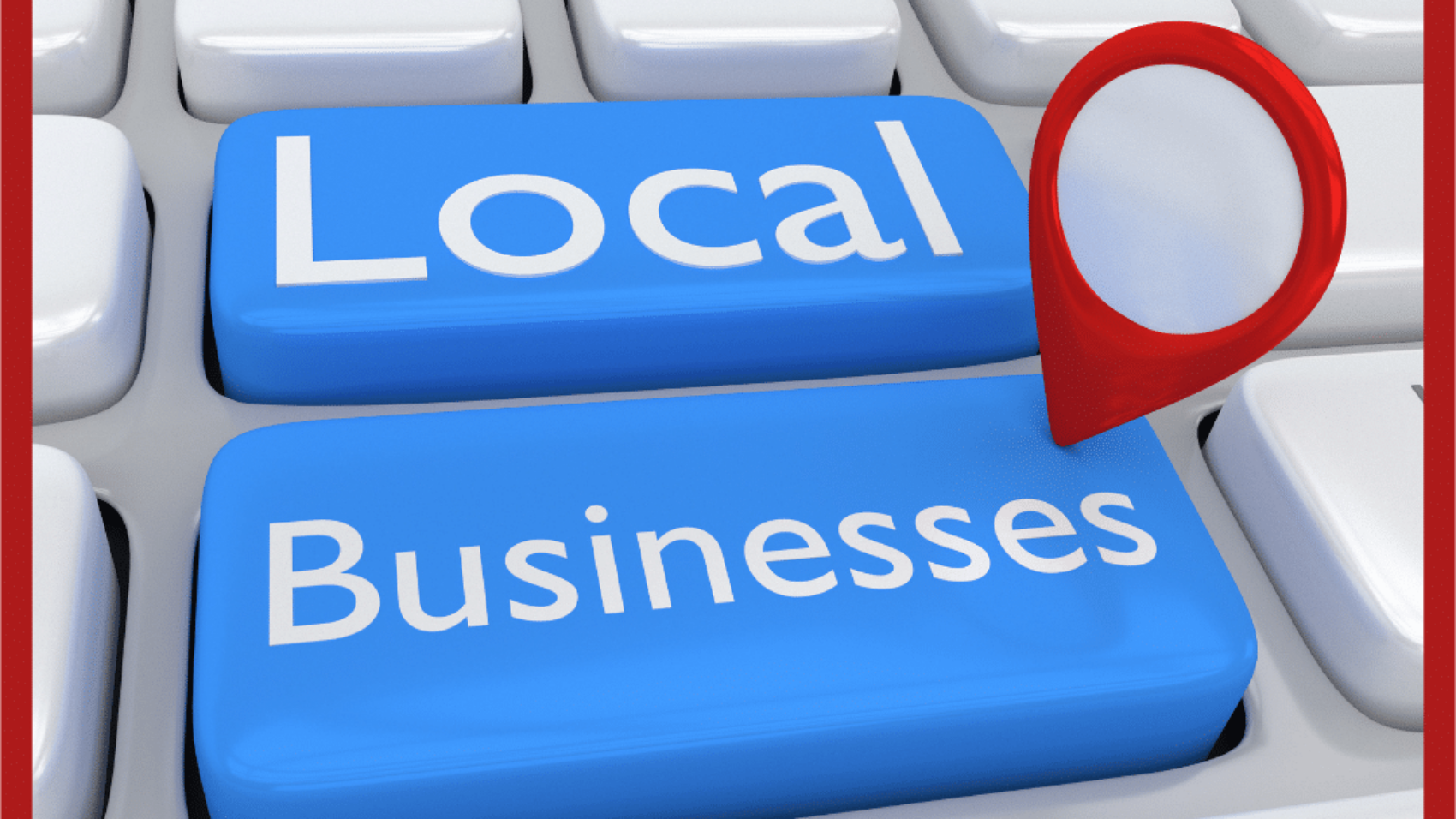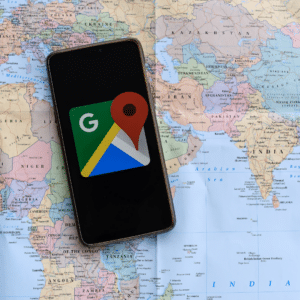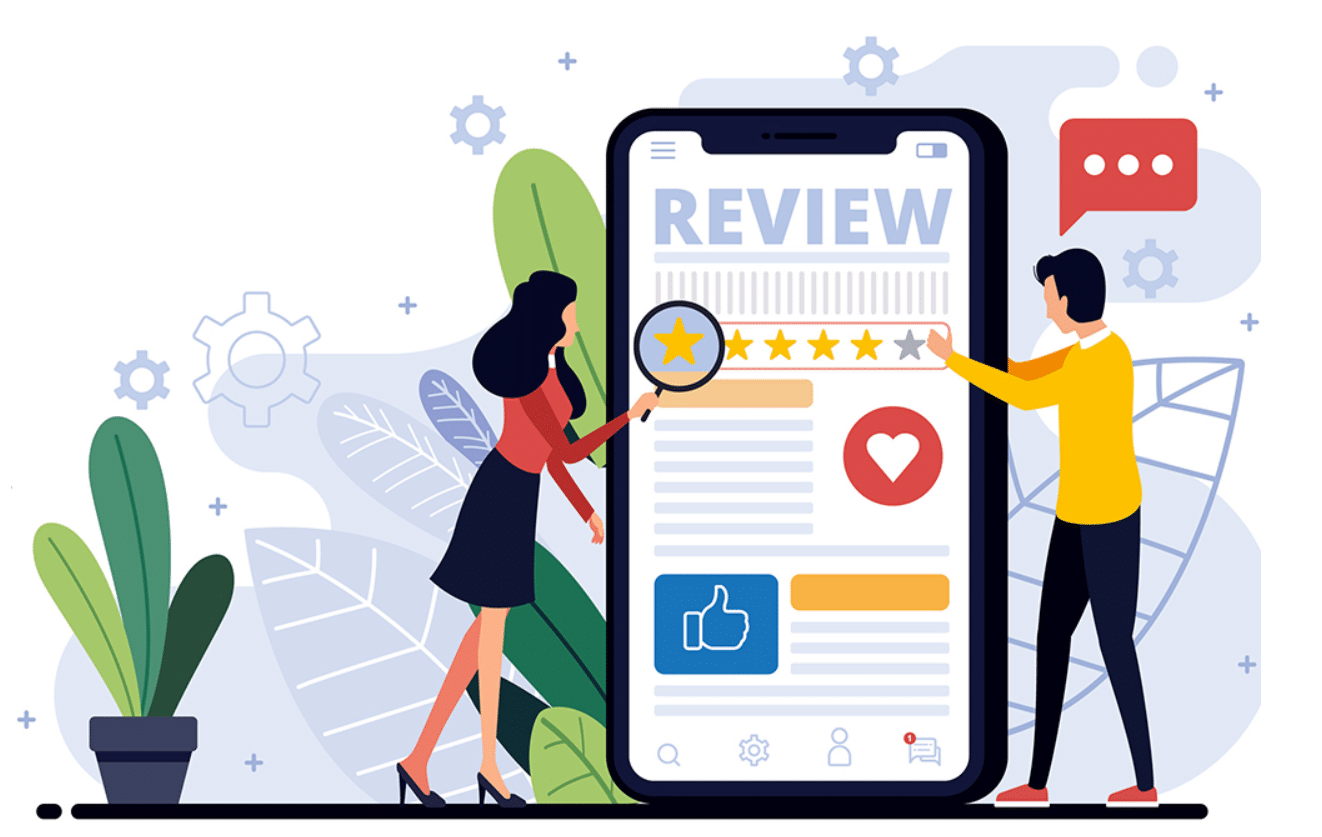
In the world of business, seizing opportunities is paramount, and this moment is no exception. This blog post is your guide to navigating the complexities of the end-of-season surplus, providing you with actionable strategies to reignite your sales engine and ensure a successful transition into the next phase.
Imagine unlocking a treasure trove of innovative approaches, each designed to elevate your dealership’s marketing efforts and drive sales. Our goal here is crystal clear: to empower you with insights and techniques that will invigorate your marketing approach, transforming your surplus inventory challenge into a resounding success story.
Whether you’re a seasoned dealership owner or a marketing aficionado, this post is tailored to equip you with the tools you need. Let’s dive into the world of end-of-season sales strategies, where each tactic serves as a crucial puzzle piece in transforming your inventory surplus into triumph. So, fasten your seatbelts – we’re about to embark on a journey that will help you navigate, strategize, and conquer the surplus conundrum.
The Power of Seasonal Promotions and Creative Strategies to Attract Buyers
When it comes to attracting buyers and igniting sales, few tools wield as much power as well-executed seasonal promotions. As the leaves change and the air turns crisp, customers are not only looking for exceptional products, but they’re also seeking enticing deals that sweeten the purchase. Let’s delve into the dynamic world of seasonal promotions, exploring the diverse range of strategies that can help you captivate your audience and make a lasting impression.
Unleashing the Potential of Seasonal Promotions
A well-timed and thoughtfully crafted seasonal promotion has the potential to create a buzz around your dealership and propel customers to action. The psychology behind these promotions is rooted in the sense of urgency and the desire to capitalize on limited time offers. By strategically aligning your promotions with the end-of-mower-season period, you tap into a mindset where buyers are more receptive to exploring new options and investing in quality machinery.
Exploring Diverse Promotional Strategies
Discounted Prices: The allure of a discounted price can be irresistibly persuasive. Consider offering significant markdowns on select lawnmower models or accessories, enticing customers with the prospect of substantial savings.
Bundle Deals: Combine complementary items to create attractive bundle deals. For instance, offer a package that includes a lawnmower, trimmer, and protective gear at a bundled price lower than the individual items combined.
Financing Options: Ease the financial burden for your customers by offering flexible financing options, such as zero-interest loans or extended payment plans. This approach can make high-ticket items more accessible and appealing.
Examples of Effective Promotional Campaigns
“Summer’s Finale Sale”: Run a week-long promotion with progressively increasing discounts as the sale period comes to a close. This encourages early buyers while creating a sense of urgency for those considering a purchase.
“Upgrade Bonanza”: Offer a trade-in program where customers can exchange their older lawnmowers for a discounted upgrade to a newer model. This not only promotes sales but also encourages the recycling of older equipment.
“Accessorize Your Summer”: Bundle a premium set of accessories with specific lawnmower models at a slightly higher price point. Highlight the added value customers receive by choosing the bundle.
“VIP Financing Event”: Host an exclusive financing event for a limited time, providing qualified customers with special financing terms and low-interest rates.
By strategically implementing these promotional strategies, your dealership can capitalize on the excitement of the season’s end, attract eager buyers, and effectively move surplus inventory. In the dynamic landscape of end-of-season sales, creativity and strategic planning are your most potent tools – and the results can be nothing short of remarkable.
Embrace Success with Clearance Events: A Comprehensive Approach
As we bid farewell to the vibrant days of summer, lawnmower and tractor dealerships stand at a pivotal juncture, ready to tackle the challenge of surplus inventory head-on. The solution? A dynamic and impactful strategy known as the clearance event. This powerful concept not only serves to move surplus stock but also as a gateway to invigorate your dealership’s sales momentum. In this section, we’ll delve into the concept of clearance events, explore their inherent benefits, and provide you with a detailed guide to planning and executing a successful event that leaves a lasting impression.
Clearance events epitomize the art of turning surplus inventory into a captivating sales opportunity. They involve creating a dedicated window of time – whether it’s a single day, a weekend extravaganza, or a week-long affair – during which your dealership puts surplus products on display at significantly reduced prices. This strategy not only ignites a sense of urgency among potential buyers but also fosters a unique and exciting shopping experience that can elevate your dealership’s brand perception.
Benefits of Clearance Events
Urgency and Anticipation: The time-bound nature of clearance events fuels a sense of urgency, compelling potential buyers to seize the opportunity before it’s gone.
Optimize Inventory: Clearance events provide a swift and strategic solution to clear excess inventory, freeing up valuable space for new arrivals and preventing overstock situations.
Heightened Foot Traffic: A well-promoted clearance event can draw a surge of foot traffic, creating a bustling atmosphere that captures the attention of passersby and potential customers.
Elevated Brand Visibility: Successful clearance events position your dealership as a hub of excitement and irresistible deals, enhancing brand visibility and fostering positive word-of-mouth.
Crafting a Successful Clearance Event: A Step-by-Step Blueprint
Set Clear Goals: Define your objectives for the event. Are you aiming to clear specific product lines, attract a specific number of visitors, or bolster brand recognition?
Choose an Opportune Date: Select a date that aligns with peak foot traffic and resonates with the end-of-season context. Weekends or coinciding with local events can enhance turnout.
Curate Your Inventory: Handpick a diverse range of surplus inventory that aligns with the event’s focus. Ensure items are well-prepared, properly priced, and presented enticingly.
Strategic Pricing: Determine competitive and enticing price points that offer genuine value to buyers while maintaining your dealership’s profitability.
Event Logistics: Plan event hours, layout, and any supplementary attractions or experiences, such as refreshments or interactive product demonstrations.
Dynamic Marketing and Promotion
Multi-Platform Outreach: Leverage social media, email marketing, and physical signage to generate anticipation across various platforms.
Compelling Visuals: Design eye-catching visuals and engaging content that communicates the event’s energy and the value of participation.
Limited-Time Appeal: Emphasize the event’s temporal exclusivity to instill a sense of urgency.
Staff Engagement: Train your staff to provide exceptional customer service, product expertise, and a welcoming atmosphere during the event.
Seamless Execution: Ensure smooth inventory management, streamlined transactions, and a memorable customer experience throughout the event.
Post-Event Assessment: Capture feedback from attendees, evaluate sales performance, and extract key learnings to refine future events.
Harnessing the Momentum of Marketing and Promotion: The heartbeat of a successful clearance event lies in effective marketing and promotion. Utilize arresting imagery, persuasive messaging, and a touch of suspense to captivate your audience. Leverage the power of social media, local advertising, and personalized outreach to generate buzz and maintain event visibility.
Armed with the clearance event strategy and a comprehensive blueprint for its execution, you’re poised to create an unforgettable event that not only sparks sales but also solidifies your dealership’s reputation as a go-to destination for unparalleled deals.
Forge Strong Alliances through Partner Collaborations
In the realm of propelling sales and infusing innovation, one strategy stands out: partner collaborations. The art of joining forces with local businesses not only breathes new life into your marketing approach but also cultivates a sense of community that resonates with customers. In this section, we’ll delve into the remarkable benefits of partner collaborations, unveil creative examples of potential partnerships, and explore the magic of cross-promotion in expanding your reach and attracting a fresh wave of enthusiastic customers.
The Power of Partner Collaborations: Uniting for Success Collaborating with local businesses isn’t just a business move; it’s an avenue for shared growth. By teaming up, you harness the collective strengths and customer bases of multiple establishments, creating a synergy that resonates with the local community. The benefits are manifold, ranging from enhanced brand visibility to increased foot traffic and customer engagement.
Benefits of Partner Collaborations:
Wider Exposure: Partnering with another business exposes your dealership to a broader audience, increasing brand recognition and expanding your customer base.
Mutual Trust: Collaborations build trust among consumers who value recommendations from businesses they already know and trust.
Resource Sharing: Share resources, such as advertising costs or event space, to maximize your impact while minimizing individual expenses.
Innovative Offerings: Partnering allows you to create unique and enticing joint promotions that offer customers a complete and valuable experience.
Potential Partnerships and Joint Promotions: A Glimpse of Possibilities
Landscaping Services Collaboration: Partner with a local landscaping company to offer a bundled package where customers receive a lawnmower purchase along with a discounted landscaping service.
Garden Center Collaboration: Join forces with a garden center to create a promotion where customers who purchase a lawnmower receive a voucher for discounted plants or gardening supplies.
Home Improvement Store Collaboration: Collaborate with a home improvement store to offer a joint workshop on lawnmower maintenance and DIY landscaping tips.
Community Event Collaboration: Partner with a local community event or fair to showcase your lawnmowers and offer special event-only discounts.
Cross-Promotion: Expanding Reach and Attracting New Customers Cross-promotion is the heart and soul of successful partner collaborations. It involves leveraging each other’s marketing channels to promote joint offers or events. Imagine your dealership’s lawnmowers being featured in the social media posts and newsletters of a partnering local business, and vice versa. This exchange not only multiplies your exposure but also positions your dealership in front of potential customers who might not have discovered you otherwise.
As you embark on partner collaborations and cross-promotion efforts, remember that the key lies in finding businesses whose values align with yours and whose offerings complement your own. When executed seamlessly, this strategy has the potential to create a win-win scenario, where both your dealership and your partners thrive, and customers enjoy the best of both worlds.
Harnessing the Power of Customer Testimonials: Building Trust and Driving Sales
In the dynamic world of lawnmower and tractor dealerships, the value of trust cannot be overstated. As you strive to make a lasting impact on potential buyers, one strategy emerges as a beacon of authenticity: customer testimonials. These real-life accounts hold the power to shape perceptions, build trust, and ultimately drive sales. In this section, we’ll explore why customer testimonials are a cornerstone of successful marketing, offer guidance on collecting and showcasing genuine customer feedback, and unveil how these testimonials can act as a powerful antidote to buyer concerns, breathing new life into your dealership’s sales efforts.
Elevating Trust through Customer Testimonials: In an era where skepticism is a common sentiment, customer testimonials serve as your dealership’s most potent armor. These authentic narratives are a testament to the positive experiences that others have had with your products and services. When potential buyers encounter genuine testimonials, their guard is lowered, and a sense of trust begins to flourish. Customer Reviews offer a window into the real impact your lawnmowers and tractors have on lives, transforming skeptical onlookers into confident, eager customers.
Guidance on Collecting and Showcasing Authentic Feedback
Solicit Feedback Strategically: Engage customers post-purchase, requesting their feedback through surveys, follow-up emails, or phone calls. Ensure your approach is respectful and unintrusive.
Capture Diverse Experiences: Seek testimonials from a diverse range of customers, highlighting various aspects of your products and services. This paints a comprehensive picture of your dealership’s offerings.
Spotlight Impactful Stories: Look for testimonials that share personal anecdotes, showcase successful outcomes, or highlight exceptional customer service. These resonate deeply with potential buyers.
Visual Testimonials: Encourage customers to submit photos or videos along with their testimonials. Visual content adds a layer of authenticity and human connection.
The Role of Testimonials in Alleviating Buyer Concerns and Encouraging Sales
Overcoming Skepticism: Testimonials act as a bridge between uncertainty and trust. They assuage potential buyers’ doubts by offering real-world evidence of the quality and reliability of your lawnmowers and tractors.
Addressing Specific Concerns: When testimonials address specific concerns or hesitations potential buyers may have, they provide reassurance and answer questions that might otherwise hinder a sale.
Emotional Connection: Testimonials evoke emotions, allowing potential buyers to see themselves benefiting from your products. An emotional connection often tips the scales in favor of a purchase.
Strengthening Purchase Intent: Positive testimonials influence the decision-making process. A potential buyer who hesitates may feel empowered to move forward, driven by the positive experiences of others.
Incorporating customer testimonials into your marketing strategy creates a harmonious symphony of authenticity and trust. By curating and showcasing these narratives, you provide potential buyers with a relatable, tangible testament to the value and impact of your offerings. The next section will unveil the power of engaging content creation and how it can serve as a catalyst for attracting and captivating your target audience.
Elevate Your Reach with Local SEO Optimization
In the digital landscape of lawnmower and tractor dealerships, a powerful ally awaits to enhance your visibility and draw nearby customers to your doorstep: local SEO optimization. This strategic approach not only places your dealership on the map but also ensures that your offerings resonate with those in your immediate vicinity. In this section, we’ll uncover the pivotal role of local SEO in attracting nearby customers, delve into the art of optimizing online listings – with a focus on Google My Business – and equip you with SEO best practices that will propel your dealership to the forefront of local search results.
The Significance of Local SEO for Nearby Customers: Local SEO acts as a digital compass, guiding local customers directly to your dealership’s virtual doorstep. In an era where proximity and convenience hold immense sway, optimizing for local search ensures that your lawnmowers and tractors are the first to capture the attention of potential buyers in your area.
Optimizing Online Listings, Embracing Google Business Profile
Claim Your Online Space: Begin by claiming and verifying your dealership’s listing on Google Business Profile. This free tool serves as your digital storefront, showcasing essential information to prospective customers.
Complete Your Profile: Thoroughly fill out your Google Business profile, including accurate contact details, business hours, high-quality images, and a compelling description that captures the essence of your dealership.
Categories and Attributes: Select relevant categories and attributes that accurately depict the nature of your dealership. This ensures you appear in search results that align with your offerings.
Consistent NAP: Ensure Name, Address, and Phone number (NAP) consistency across all online listings, including your website, social media profiles, and directories. Consistency builds trust and aids in search ranking.
SEO Best Practices for Local Visibility
Keyword Optimization: Incorporate localized keywords naturally into your website content, meta descriptions, and titles. These keywords should reflect the products you offer and the areas you serve.
Localized Content: Create engaging blog posts, videos, and other content that cater to local interests and concerns. Address topics that are relevant to your target audience’s needs.
High-Quality Backlinks: Foster relationships with local businesses, organizations, and influencers to earn high-quality backlinks. These connections signal credibility to search engines.
Customer Reviews: Encourage satisfied customers to leave reviews on Google My Business and other review platforms. Positive reviews enhance your reputation and influence local search rankings.
Mobile Optimization: Ensure your website is mobile-friendly, as many local searches occur on smartphones. A responsive design enhances user experience and search visibility.
By embracing local SEO optimization and crafting an inviting online presence, you lay the foundation for attracting nearby customers who are actively seeking the solutions you provide. The next section will unveil the art of engaging your audience through social media engagement and how this strategy can spark connections and ignite interest in your offerings.
Amplify Connection Through Social Media Engagement
In the bustling realm of lawnmower and tractor dealerships, a powerful platform awaits to foster genuine connections and ignite interest: social media. This dynamic medium isn’t just a digital space; it’s a conduit for engaging with customers, building relationships, and showcasing the heart and soul of your dealership. In this section, we’ll delve into the pivotal role of social media in customer engagement, unveil strategies for crafting interactive and shareable content, and explore the multitude of benefits stemming from contests, user-generated content, and the art of fostering robust customer engagement.
The Vital Role of Social Media in Customer Engagement: Social media transcends traditional marketing avenues, providing a direct line of communication between your dealership and potential buyers. It’s a virtual handshake, a space where you can humanize your brand, share stories, and listen to your audience’s needs. Social media acts as a canvas to paint the personality of your dealership, inviting customers to participate in a meaningful dialogue.
Strategies for Crafting Interactive and Shareable Content
Behind-the-Scenes Glimpses: Offer sneak peeks into the inner workings of your dealership, showcasing the dedication and craftsmanship that go into your lawnmowers and tractors.
Educational How-Tos: Create engaging videos or blog posts that provide tips, maintenance advice, and step-by-step guides related to lawnmower care and operation.
Customer Success Stories: Share real-life stories of customers who have benefitted from your products. These narratives resonate deeply and inspire trust.
Interactive Polls and Quizzes: Pose thought-provoking questions, quizzes, or polls that encourage audience participation and interaction.
The Benefits of Contests, User-Generated Content, and Customer Engagement
Contests and Giveaways: Launching contests or giveaways on social media generates excitement and encourages user engagement. Prizes can range from accessories to exclusive experiences, enticing customers to actively participate.
User-Generated Content (UGC): Encourage customers to share their experiences through photos, videos, and testimonials. UGC acts as a powerful endorsement and builds a sense of community.
Customer Engagement Creates Loyalty: Engaging with customers on social media fosters a sense of loyalty. Respond promptly to comments, messages, and inquiries, demonstrating your dedication to exceptional customer service.
Humanizing Your Brand: By actively engaging with customers, you humanize your brand and forge meaningful connections. People are more likely to engage with a brand they perceive as approachable and relatable.
Increased Reach and Virality: Interactive content, contests, and UGC have the potential to go viral, extending your dealership’s reach beyond your immediate audience.
Social media isn’t just about broadcasting messages; it’s about creating a vibrant and interactive space where customers become an integral part of your dealership’s story. Through strategic engagement, captivating content, and fostering a sense of community, you’ll not only attract new customers but also cultivate a loyal following eager to champion your offerings.
The next section will explore the concept of post-season maintenance packages and how they can provide added value to customers while aiding in inventory clearance.
Elevate Customer Experience with Post-Season Maintenance Packages
As the curtain falls on another vibrant season of lawnmower and tractor usage, a new opportunity emerges to enhance customer satisfaction and solidify your dealership’s reputation: post-season maintenance packages. Beyond the purchase, these packages offer buyers an invaluable service that ensures their equipment remains in optimal condition, while also serving as a strategic avenue to clear surplus inventory. In this section, we’ll introduce the concept of post-season maintenance packages, shed light on the value they bring to buyers, and delve into the intricacies of crafting and promoting these packages to create a win-win scenario for both your dealership and your customers.
Introducing the Concept of Post-Season Maintenance Packages: Post-season maintenance packages are a comprehensive offering designed to prolong the life and performance of lawnmowers and tractors after a season of hard work. This service isn’t just about routine maintenance; it’s about providing buyers with peace of mind and expert care to ensure their equipment is primed and ready for the next season’s challenges.
Unlocking the Value for Buyers
Optimal Performance: Maintenance packages guarantee that lawnmowers and tractors are operating at peak performance, delivering efficient and reliable results.
Extended Lifespan: Regular maintenance prevents wear and tear, extending the lifespan of equipment and protecting the buyer’s investment.
Time and Effort Savings: Buyers can sidestep the hassle of DIY maintenance, relying on professionals to handle all upkeep needs.
Expert Insights: Maintenance packages provide customers with access to expert advice, tips, and personalized recommendations for their specific equipment.
Creating and Promoting Maintenance Packages: A Strategic Approach
Package Customization: Design maintenance packages that align with the needs of different customer segments, offering tiers of service that cater to various budgets and preferences.
Service Checklist: Outline the scope of services included in each package, such as blade sharpening, oil change, filter replacement, and thorough inspections.
Transparent Pricing: Clearly present the pricing structure for each maintenance package, showcasing the value of the services provided.
Promotion Across Channels: Leverage your website, social media platforms, email newsletters, and in-store displays to promote the availability and benefits of post-season maintenance packages.
Customer Education: Create informative content that highlights the importance of post-season maintenance and educates buyers about the tangible benefits.
Limited-Time Offers: Inject a sense of urgency by offering limited-time discounts or incentives for customers who book their maintenance packages early.
By introducing post-season maintenance packages, your dealership elevates its role beyond product sales, positioning itself as a partner committed to the long-term satisfaction of customers. This thoughtful offering not only adds value to buyers but also aligns perfectly with your goal of clearing surplus inventory, creating a seamless synergy that strengthens customer loyalty and drives sales.
In the final section, we’ll wrap up our journey by summarizing the key takeaways and urging dealerships to embark on an innovative and customer-centric approach to thriving in the competitive landscape.
A Thriving Future Awaits: Embrace Innovation and Flourish
As the sun sets on this exploration of revitalizing marketing strategies for lawnmower and tractor dealerships, a clear path to success emerges. From the dynamic allure of clearance events to the authentic voices of customer testimonials, each strategy we’ve uncovered holds the potential to reshape your dealership’s trajectory.
Remember, the journey doesn’t end here. By forging partnerships with local businesses, engaging your audience through social media, and offering post-season maintenance packages, you’re nurturing a vibrant ecosystem where customers become more than patrons – they become valued members of your dealership’s narrative.
In a landscape where trust and engagement reign supreme, your dealership has the power to rise above the ordinary and carve a distinctive presence. As you embrace these strategies, you embark on a dynamic voyage toward continued growth, customer loyalty, and a thriving future that awaits beyond the horizon. Let innovation be your compass and let your dedication to customer satisfaction be your guiding star. Your dealership’s success story is just beginning, and the possibilities are as limitless as the open fields your lawnmowers and tractors conquer.
If you need help with any part of your digital marketing endeavors, Dealers Digital Marketing can help. Contact us now to learn more!
Learn more about our automated marketing platform, DealerAmp, The #1 platform built for dealerships! Add a chat-bot to your website, Manage your sales funnel, email marketing, social media, reputation management, business listing management and conversations from all your digital channels, all in one spot.















